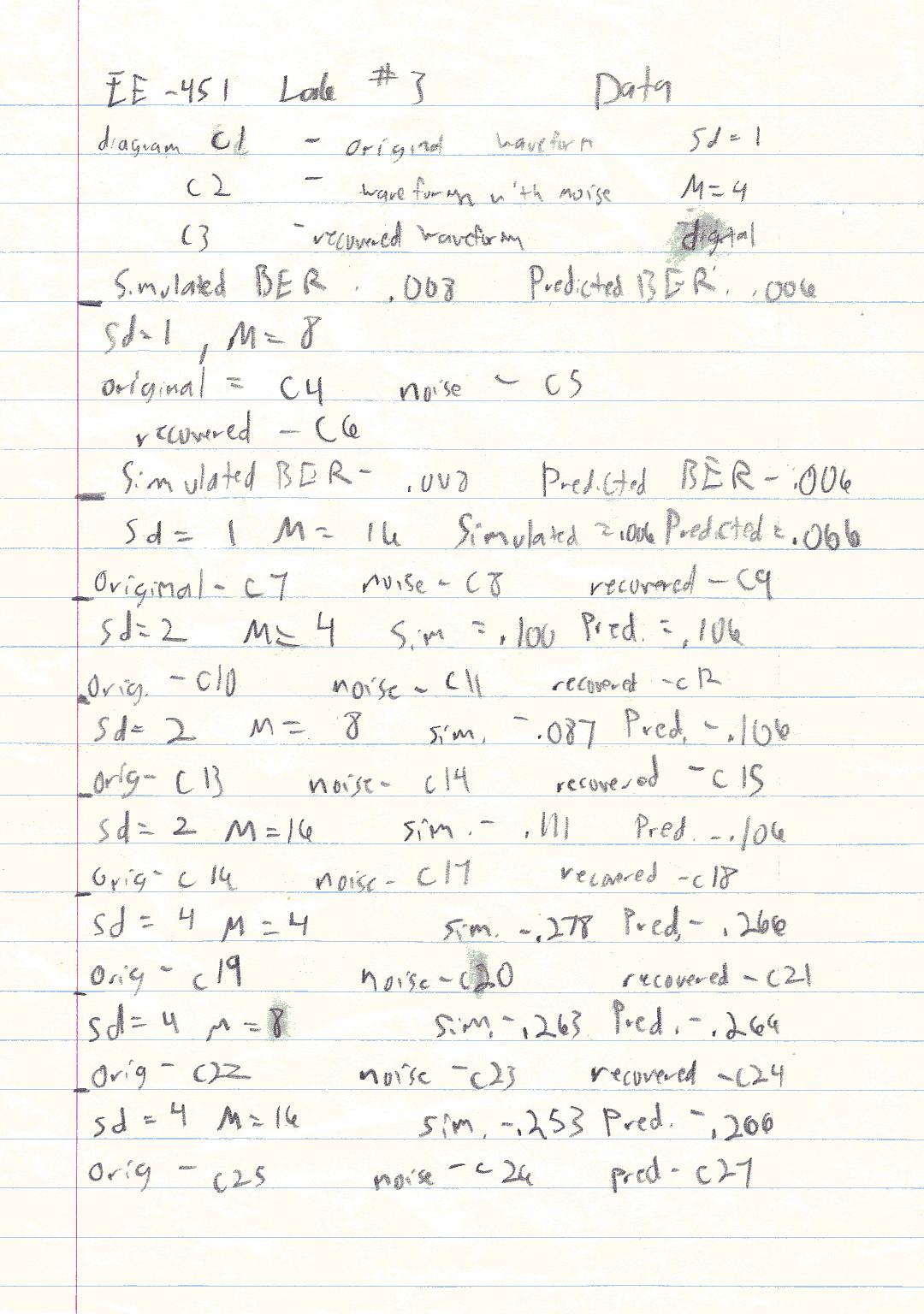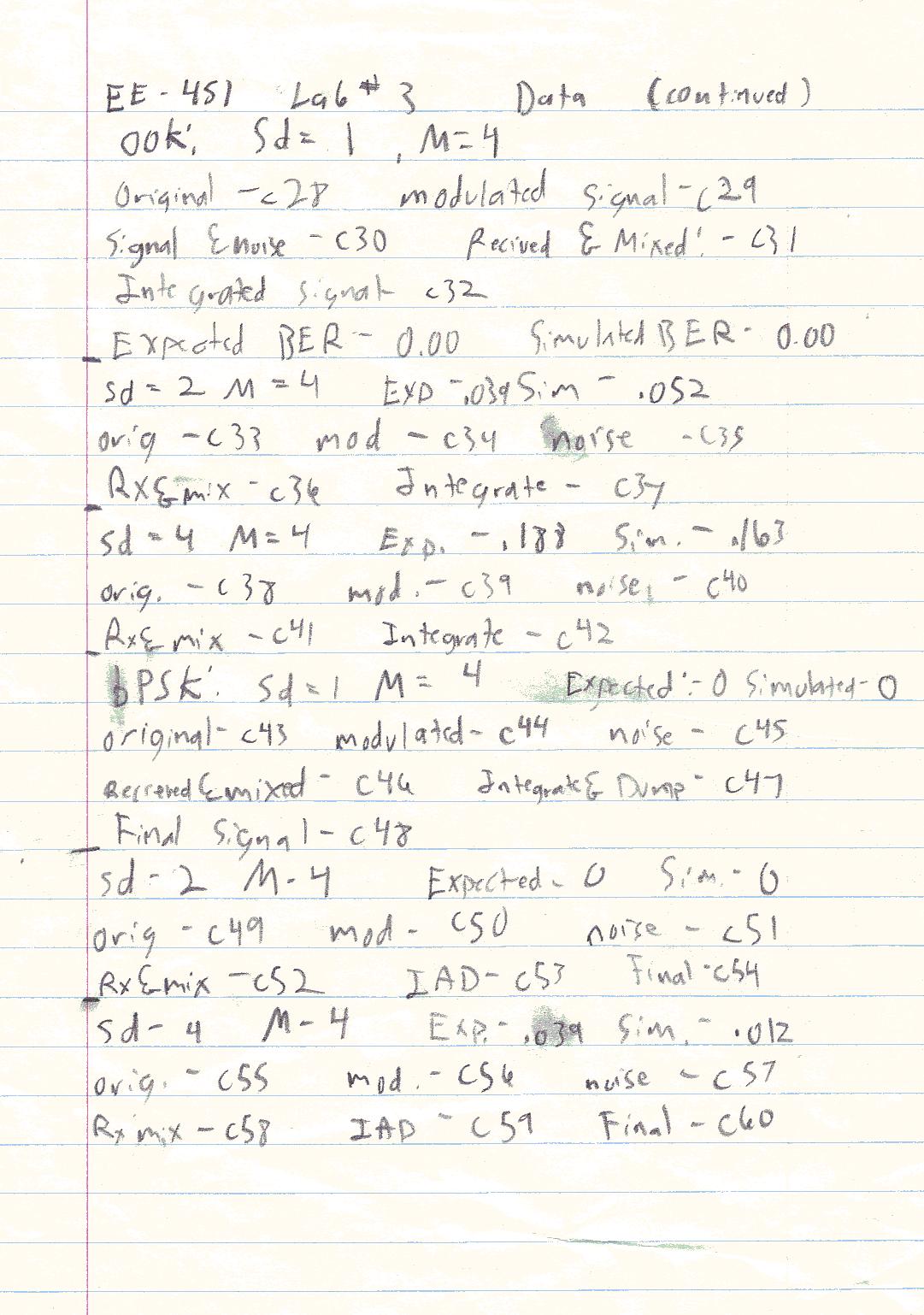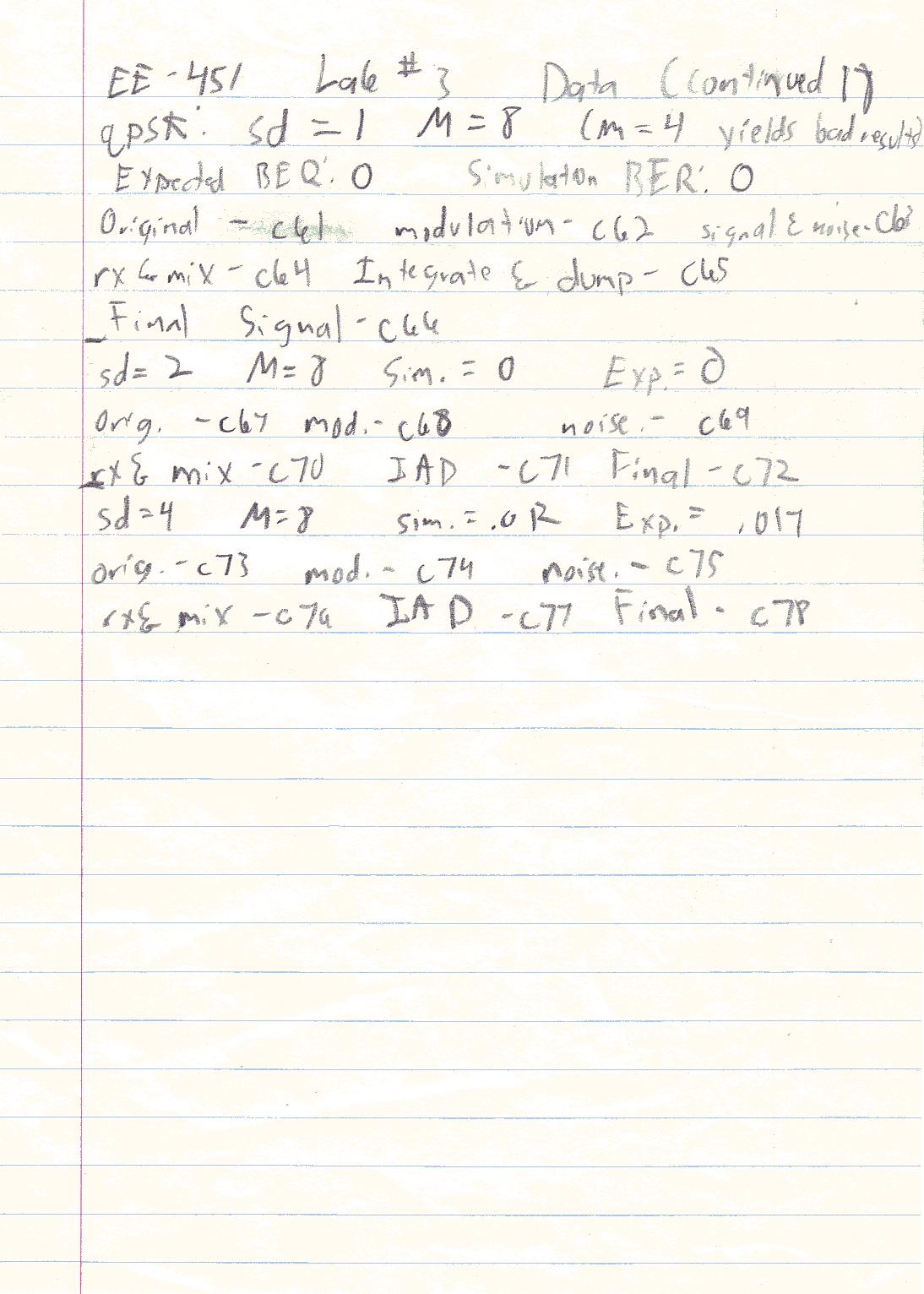![]() Objective
Objective
This lab will demonstrate the transmission of a digital signal in the presence of noise. To accomplish this, a digital signal will be simulated, and a noise signal will be simulated. Then the two signal will be added and the signal will be decoded and bit-errors will be counted. The number of bit-errors will then be compared to an expected valued generated using "Q" functions. Various methods of digital modulation will be employed to show the advantages and disadvantages of various modulation techniques.
![]() Components Used
Components Used
1) PC with Octave installed.
![]() Procedures
Procedures
1) Simulate a plain digital signal in the presence of noise by using the command "digital(sd,M)" where sd is the standard deviation and M is the expansion factor.
2) Use 1 for sd and 4 for M and record the results.
3) Repeat step 2 using 8 and 16 for M.
4) Repeat steps 1 through 3 using sd = 2, 4.
5) Using the "ook(sd,M)" command, simulate an OOK modulated digital signal.
6) Simulate the signal using sd = 1, 2, 4 M=4.
7) Create a .m file that will simulate a signal using BPSK modulation.
8) Simulate a BPSK signal using M=8, sd=1, 2, 4.
9) Repeat steps 6 and 7 using QPSK modulation.
![]() Lab
Data / Results
Lab
Data / Results
1) Table 1: Bit Error Rates:
|
Modulation Technique |
M |
RMS Noise Voltage |
Expected BER |
Observed BER |
% Error |
|---|---|---|---|---|---|
|
TTL |
4 |
1v |
.006 |
.008 |
33.3% |
|
TTL |
8 |
1v |
.006 |
.008 |
33.3% |
|
TTL |
16 |
1v |
.006 |
.008 |
33.3% |
|
TTL |
4 |
2v |
.106 |
.100 |
5.66% |
|
TTL |
8 |
2v |
.106 |
.111 |
4.72% |
|
TTL |
16 |
2v |
.106 |
.087 |
17.9% |
|
TTL |
4 |
4v |
.266 |
.278 |
4.51% |
|
TTL |
8 |
4v |
.266 |
.263 |
1.13% |
|
TTL |
16 |
4v |
.266 |
.253 |
4.89% |
|
OOK |
4 |
1v |
.000 |
.000 |
0% |
|
OOK |
4 |
2v |
.039 |
.052 |
33.3% |
|
OOK |
4 |
4v |
.188 |
.163 |
13.3% |
|
BPSK |
4 |
1v |
.000 |
.000 |
0% |
|
BPSK |
4 |
2v |
.000 |
.000 |
0% |
|
BPSK |
4 |
4v |
.039 |
.012 |
69.2% |
|
QPSK |
8 |
1v |
.000 |
.000 |
0% |
|
QPSK |
8 |
2v |
.000 |
.000 |
0% |
|
QPSK |
8 |
4v |
.012 |
.017 |
41.7% |
2) Diagram 1: Original TTL signal for M=4 sd = 1 digital transmission
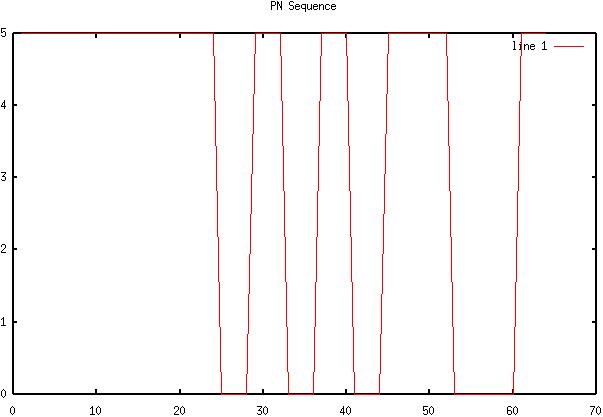
3) Diagram 2: Digital transmission with noise
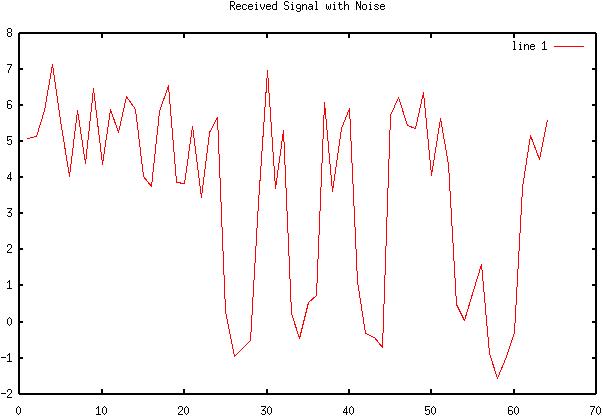
4) Diagram
3: Recovered signal

5) Diagram
4: Original TTL signal for M=8 sd = 1 digital transmission
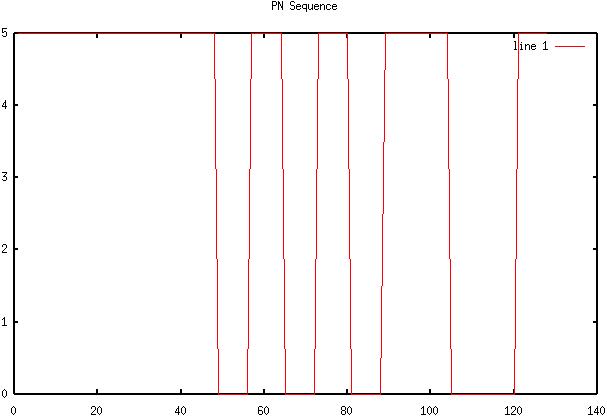
6) Diagram
5: Digital transmission with noise
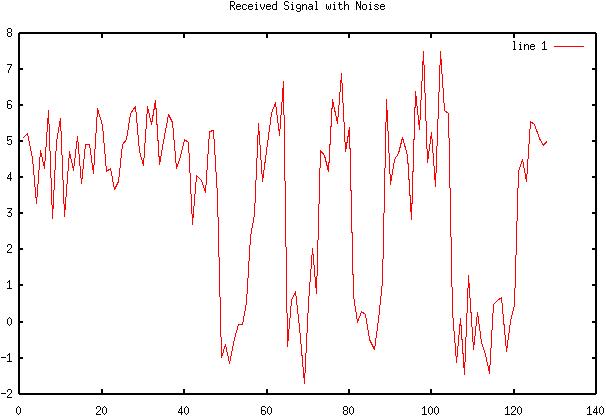
7) Diagram
6: Recovered signal
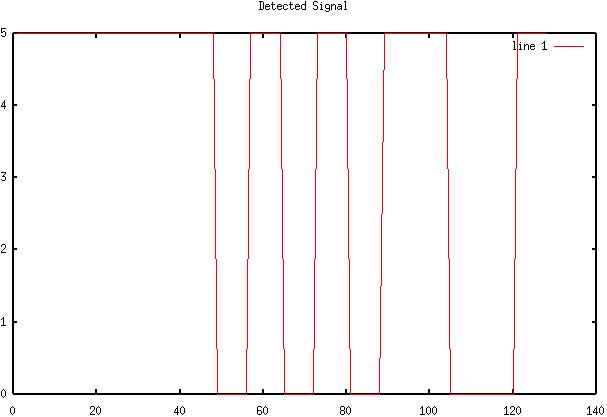
8) Diagram
7: Original TTL signal for M=16 sd = 1 digital transmission

9) Diagram
8: Digital transmission with noise
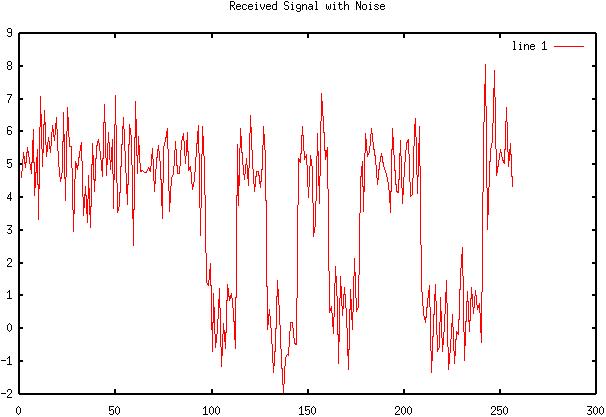
10) Diagram
9: Recovered signal
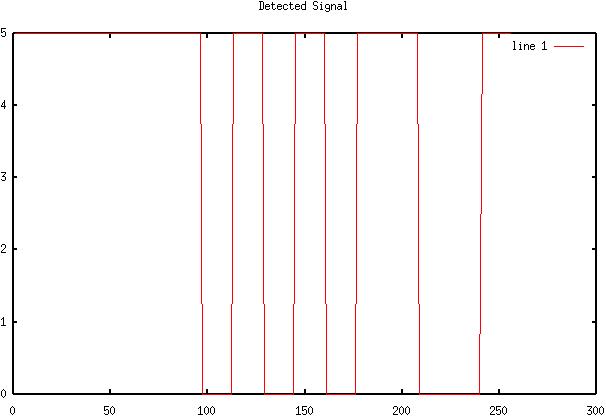
11) Diagram
10: Original TTL signal for M=4 sd = 2 digital transmission
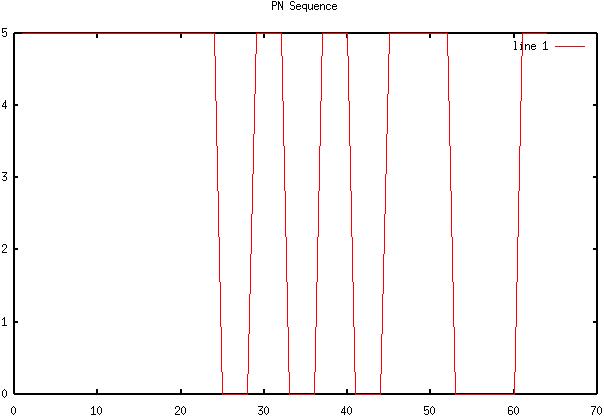
12) Diagram
11: Digital transmission with noise
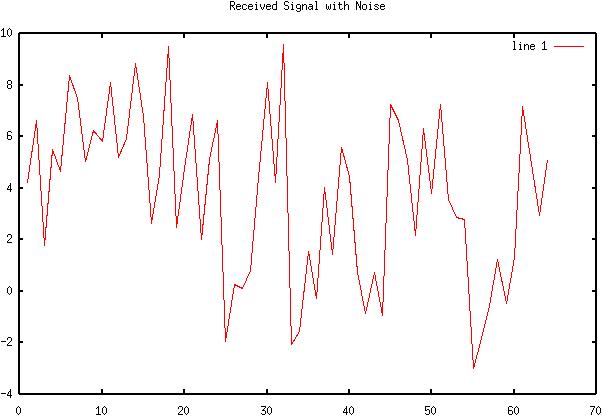
13) Diagram
12: Recovered signal
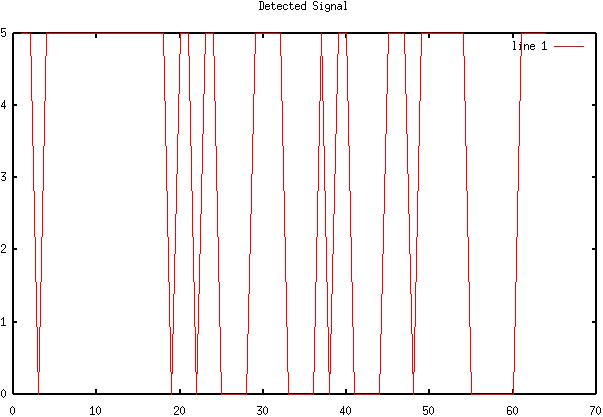
14) Diagram
13: Original TTL signal for M=8 sd = 2 digital transmission
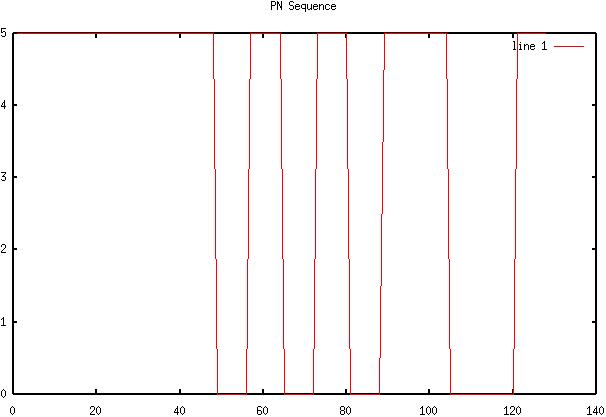
15) Diagram
14: Digital transmission with noise
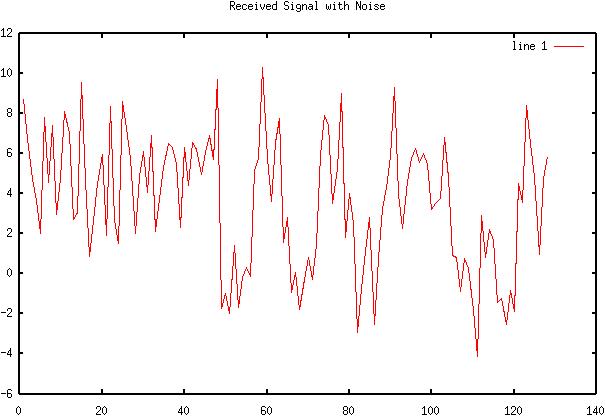
16) Diagram
15: Recovered signal
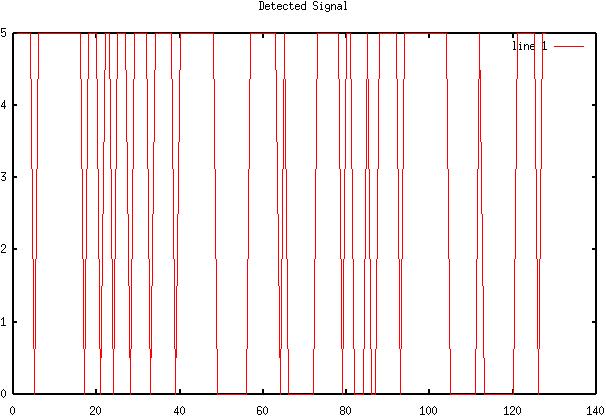
17) Diagram
16: Original TTL signal for M=16 sd = 2 digital transmission
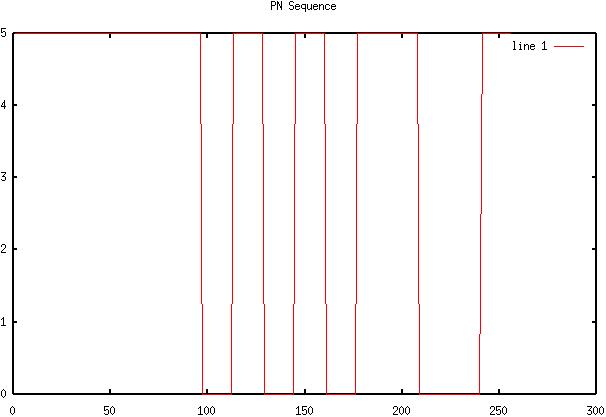
18) Diagram
17: Digital transmission with noise
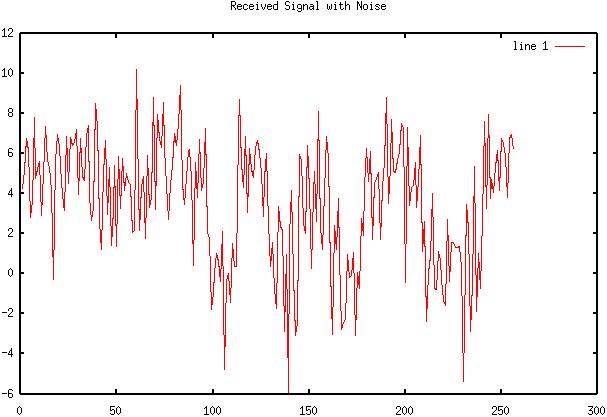
19) Diagram
18: Recovered signal

20) Diagram
19: Original TTL signal for M=4 sd = 4 digital transmission
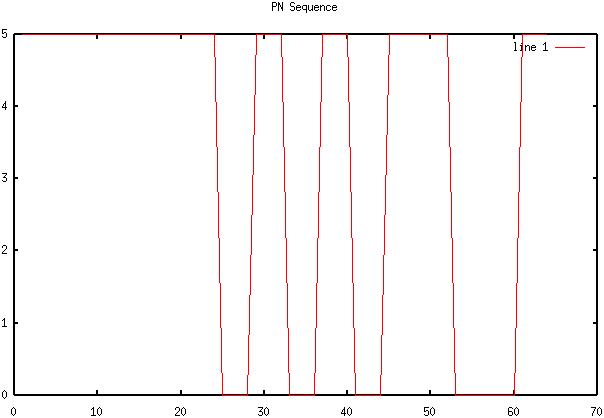
21) Diagram
20: Digital transmission with noise
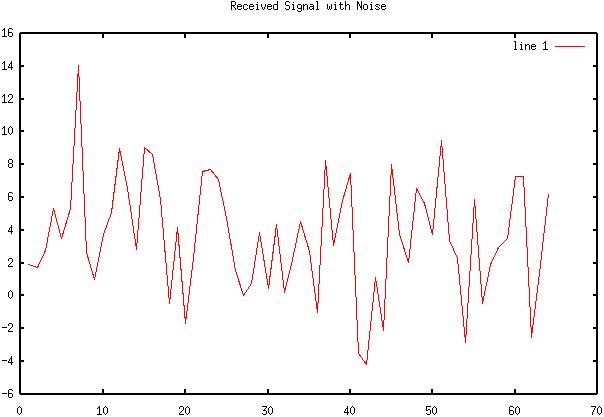
22) Diagram
21: Recovered signal

23) Diagram
22: Original TTL signal for M=8 sd = 4 digital transmission
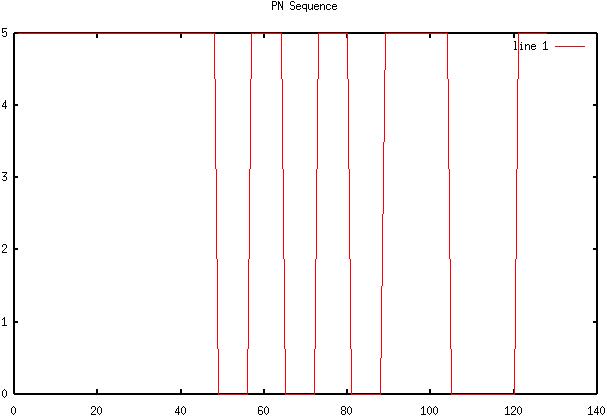
24) Diagram
23: Digital transmission with noise
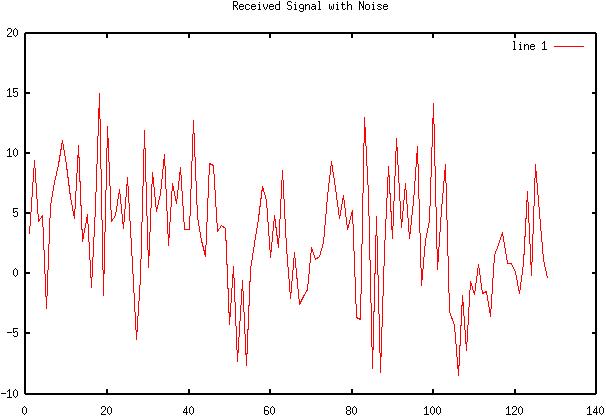
25) Diagram
24: Recovered signal

26) Diagram
25: Original TTL signal for M=16 sd = 4 digital transmission
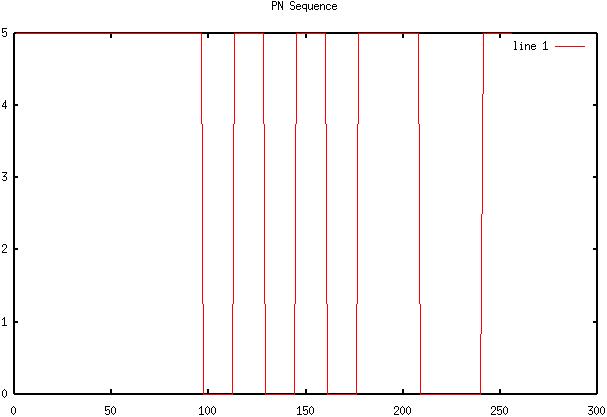
27) Diagram
26: Digital transmission with noise

28) Diagram
27: Recovered signal
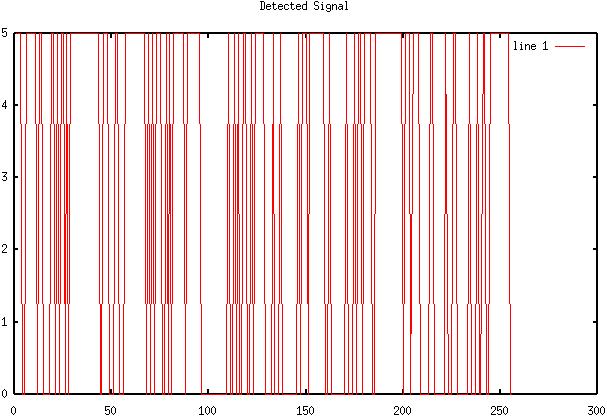
29) Diagram
28: Original TTL signal for M=4 sd = 1 OOK transmission
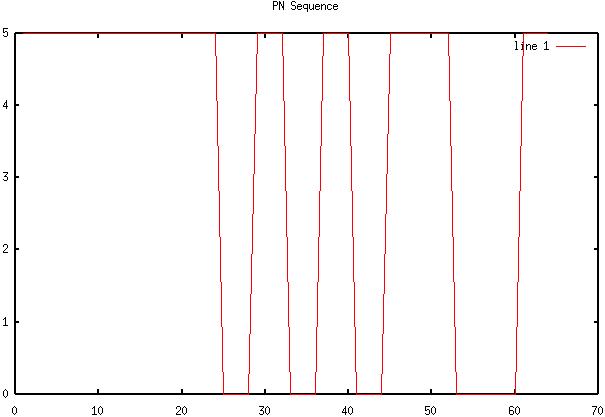
30) Diagram
29: OOK Signal
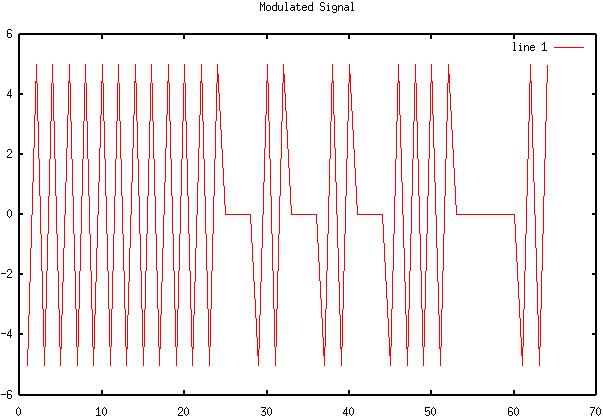
31) Diagram
30: OOK Signal and noise
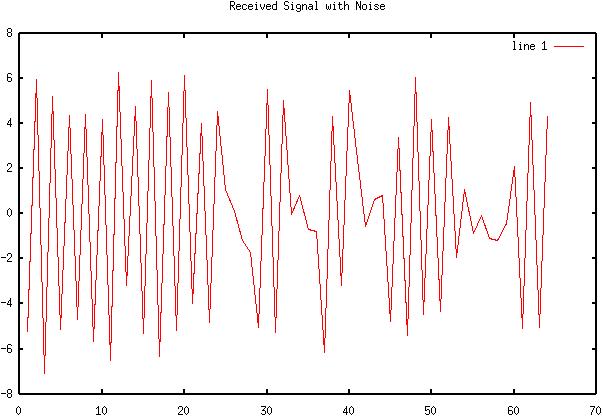
32) Diagram
31: OOK Signal after mixing
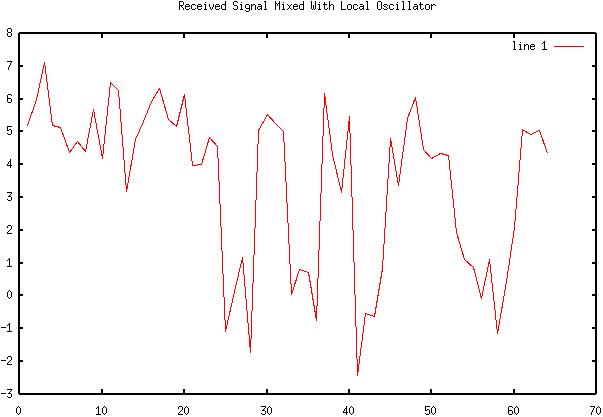
33) Diagram
32: Integrated and dumped signal
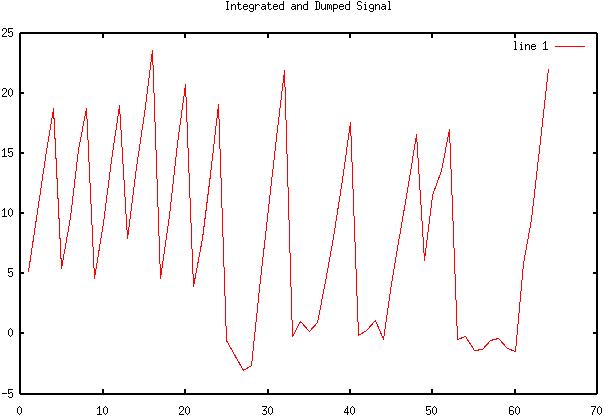
34) Diagram
33: Original TTL signal for M=4 sd = 2 OOK transmission
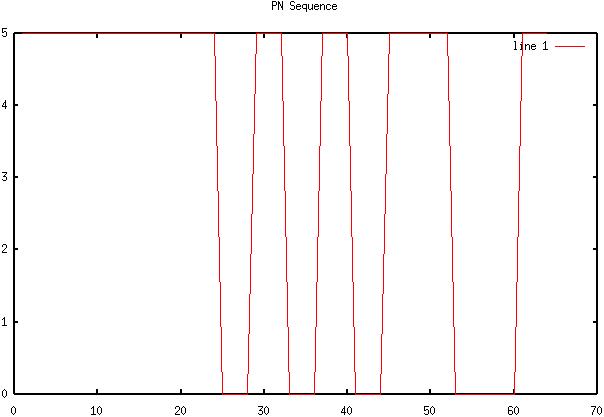
35) Diagram
34: OOK Signal
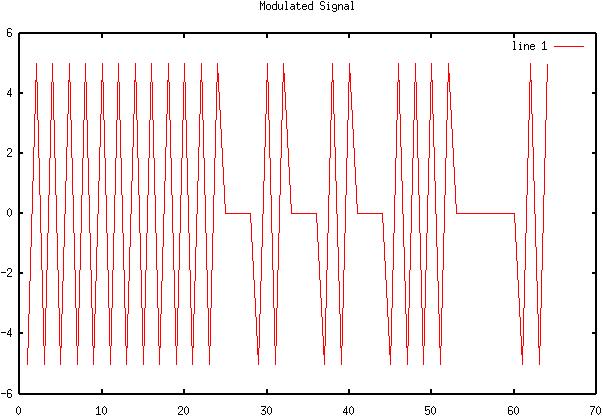
36) Diagram
35: OOK Signal and noise
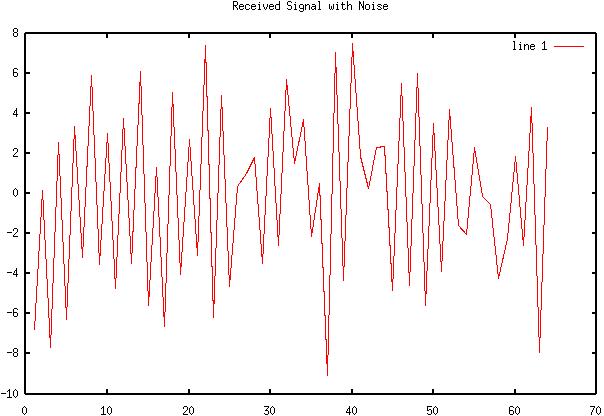
37) Diagram
36: OOK Signal after mixing
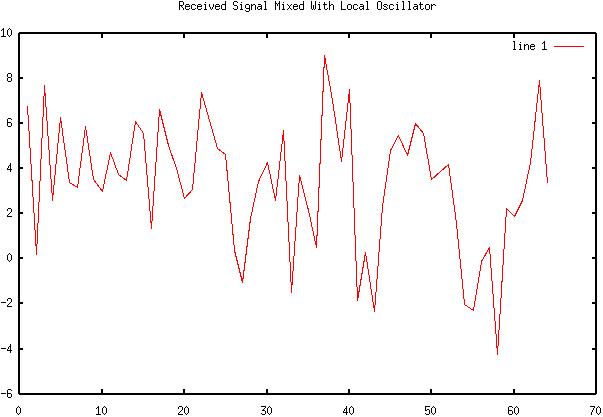
38) Diagram
37: Integrated and dumped signal
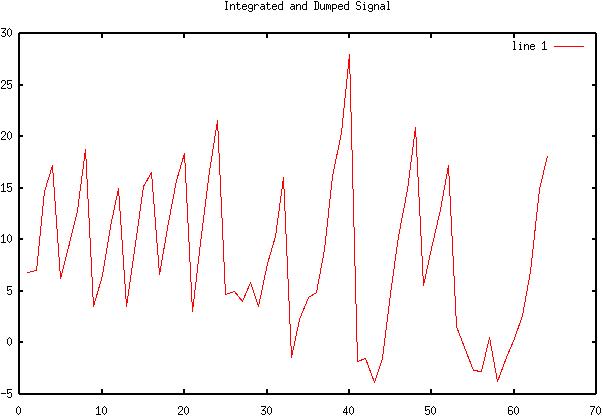
39) Diagram
38: Original TTL signal for M=4 sd = 4 OOK transmission
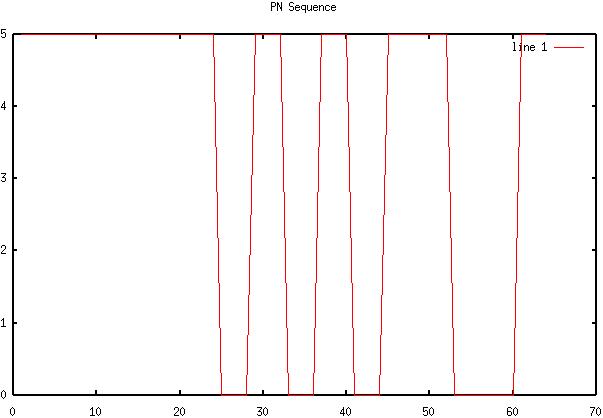
40) Diagram
39: OOK Signal
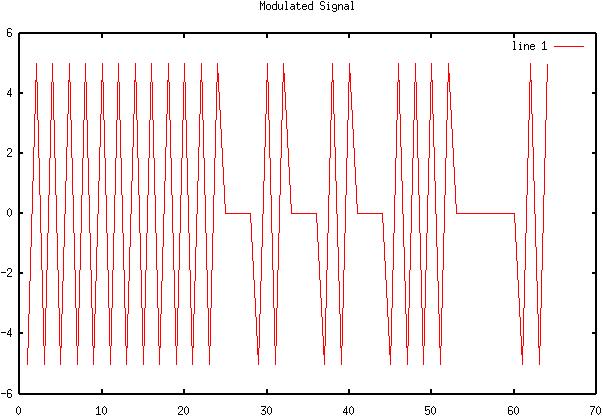
41) Diagram
40: OOK Signal and noise
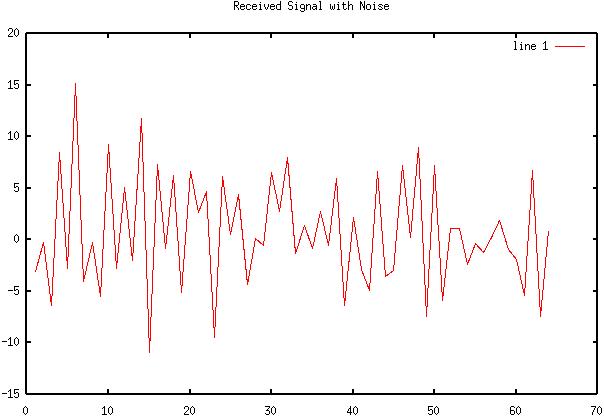
42) Diagram
41: OOK Signal after mixing
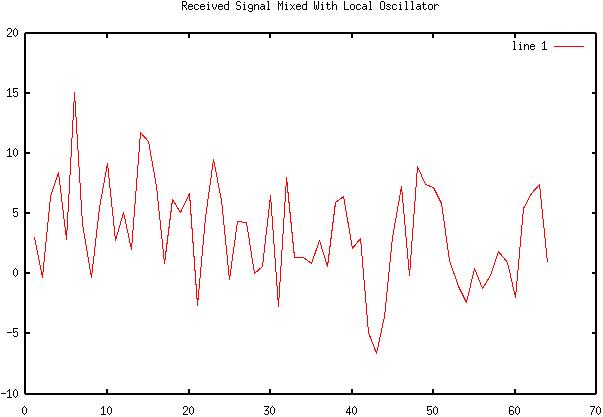
43) Diagram
42: Integrated and dumped signal

44) Diagram
43: Original TTL signal for M=4 sd = 1 BPSK transmission
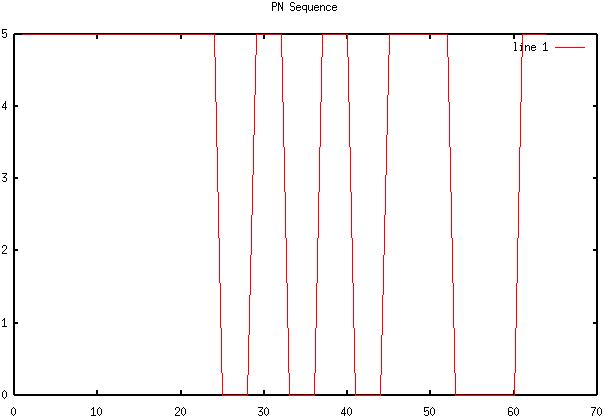
45) Diagram
44: BPSK Signal
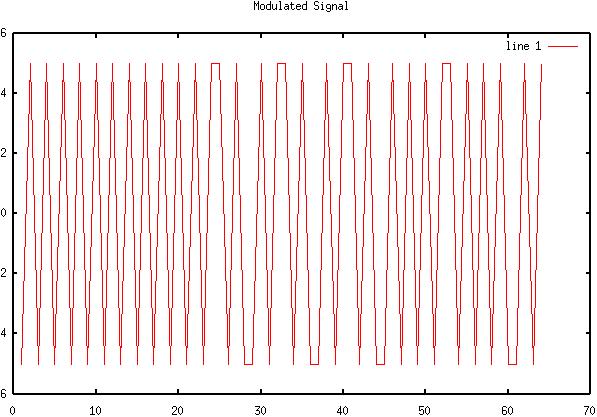
46) Diagram
45: BPSK Signal and noise
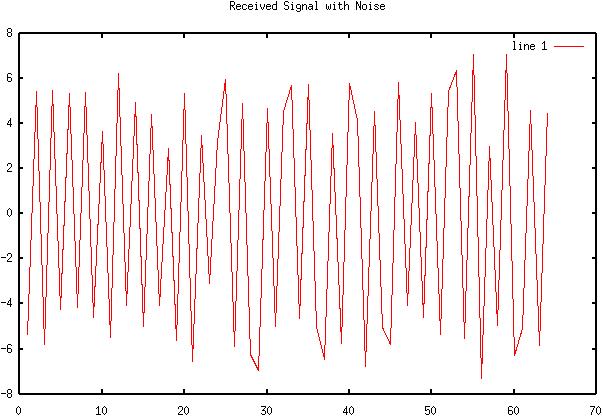
47) Diagram
46: BPSK Signal after mixing

48) Diagram
47: Integrated and dumped signal

49) Diagram
48: Final received signal
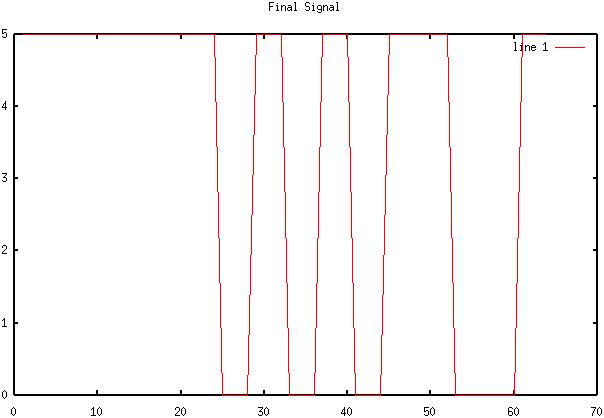
50) Diagram
49: Original TTL signal for M=4 sd = 2 BPSK transmission
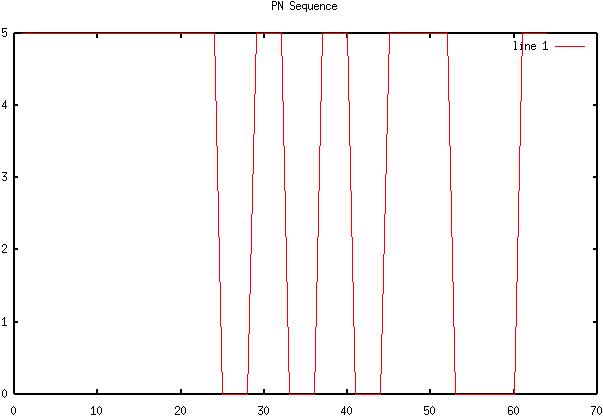
51) Diagram
50: BPSK Signal
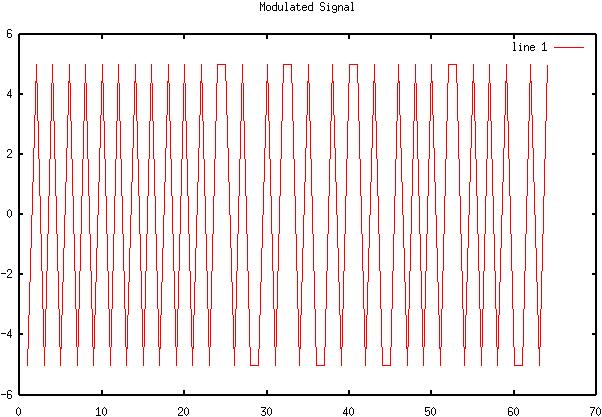
52) Diagram
51: BPSK Signal and noise

53) Diagram
52: BPSK Signal after mixing
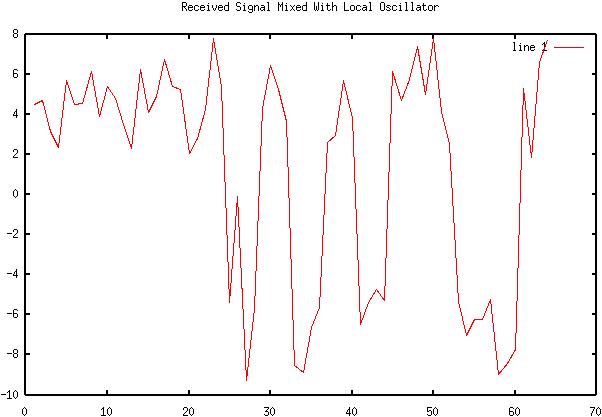
54) Diagram
53: Integrated and dumped signal
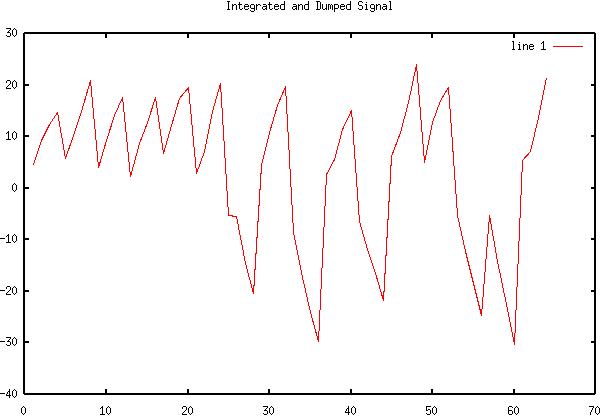
55) Diagram
54: Final received signal
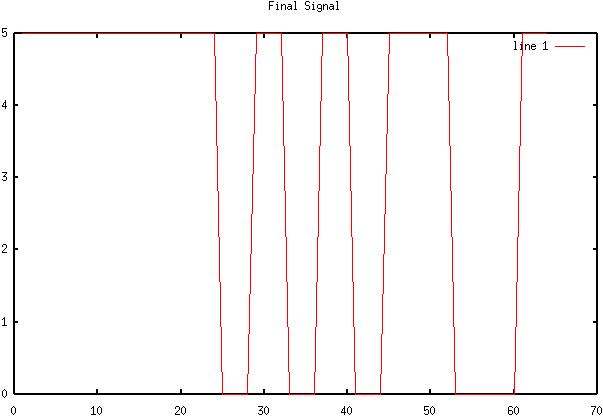
56) Diagram
55: Original TTL signal for M=4 sd = 4 BPSK transmission
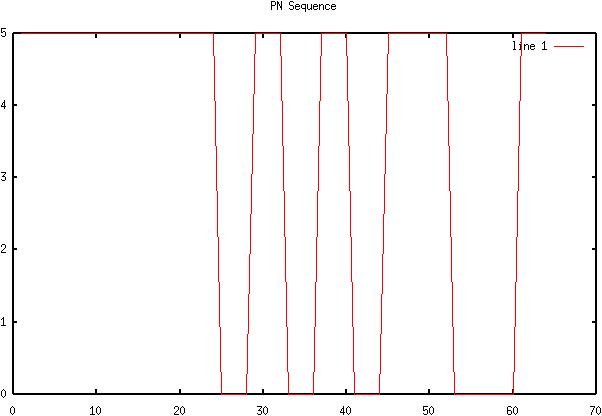
57) Diagram
56: BPSK Signal
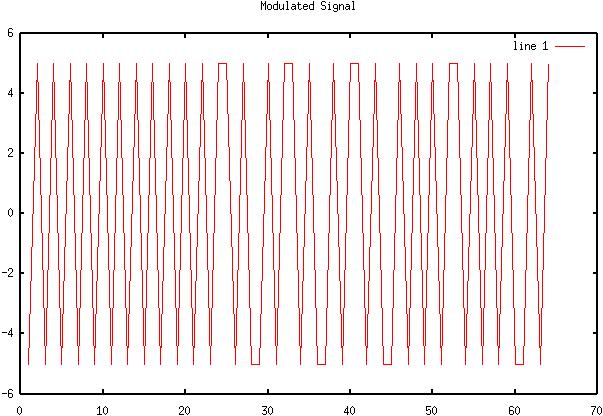
58) Diagram
57: BPSK Signal and noise
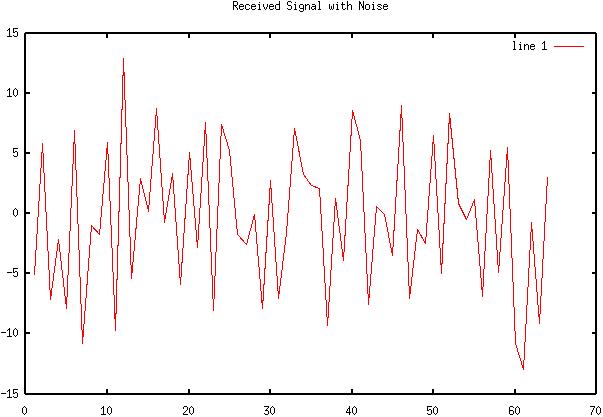
59) Diagram
58: BPSK Signal after mixing
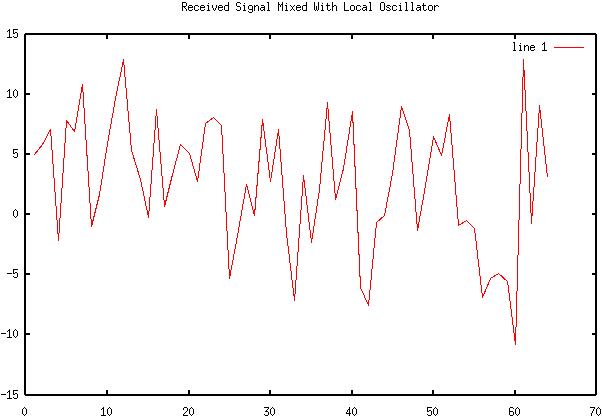
60) Diagram
59: Integrated and dumped signal
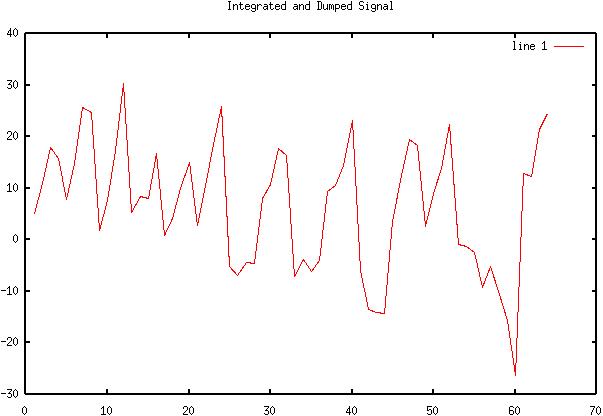
61) Diagram
60: Final received signal
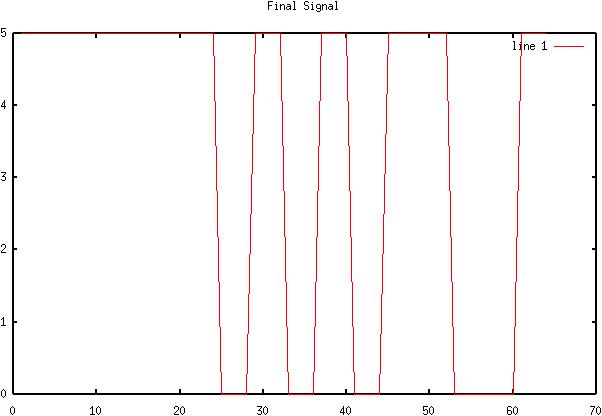
62) Diagram
61: Original TTL signal for M=8 sd = 1 QPSK transmission
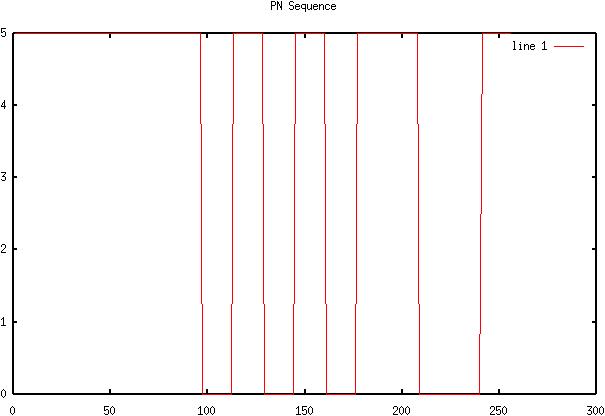
63) Diagram
62: QPSK Signal
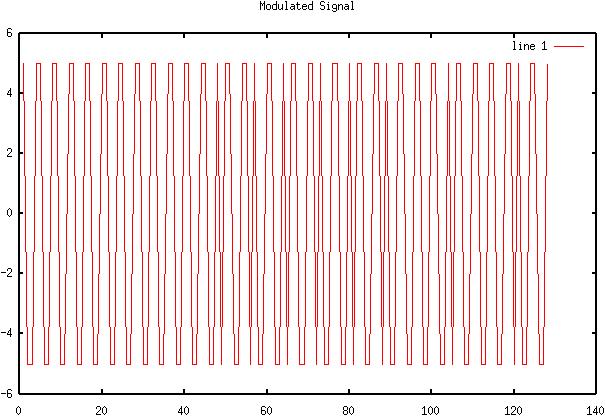
64) Diagram
63: QPSK Signal and noise

65) Diagram
64: QPSK Signal after mixing
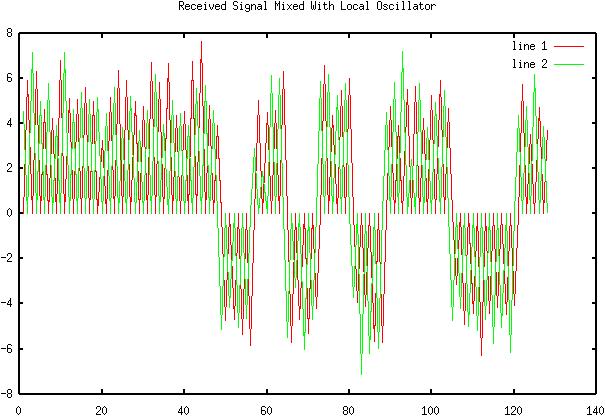
66) Diagram
65: Integrated and dumped signal
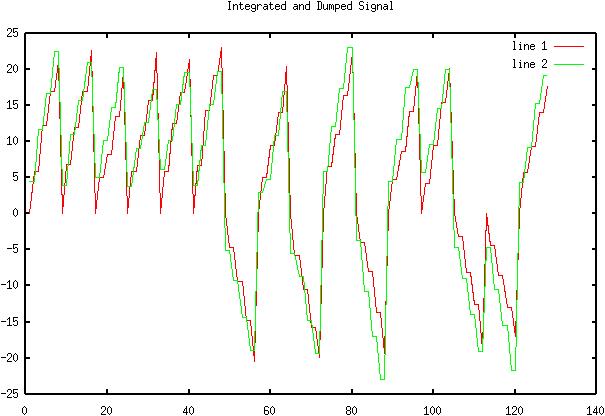
67) Diagram
66: Final received signal

68) Diagram
67: Original TTL signal for M=8 sd = 2 QPSK transmission
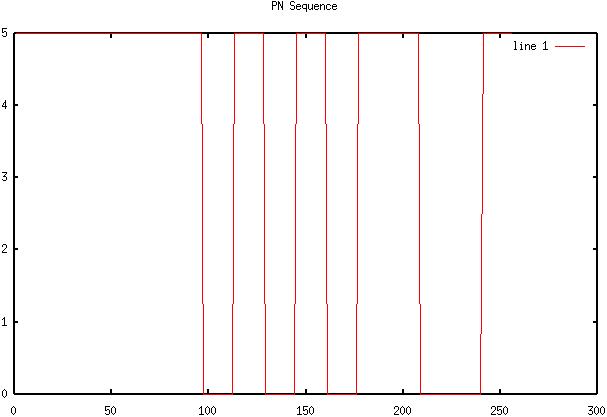
69) Diagram
68: QPSK Signal

70) Diagram
69: QPSK Signal and noise
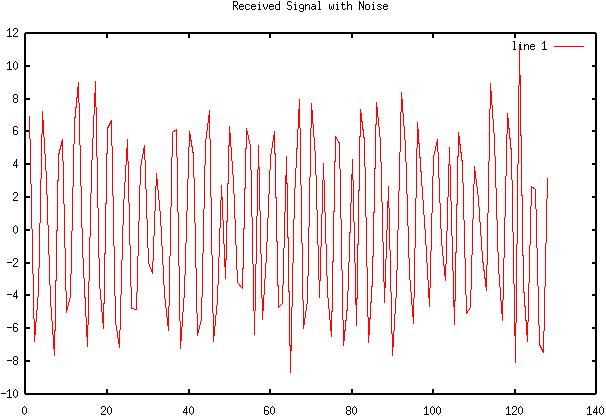
71) Diagram
70: QPSK Signal after mixing
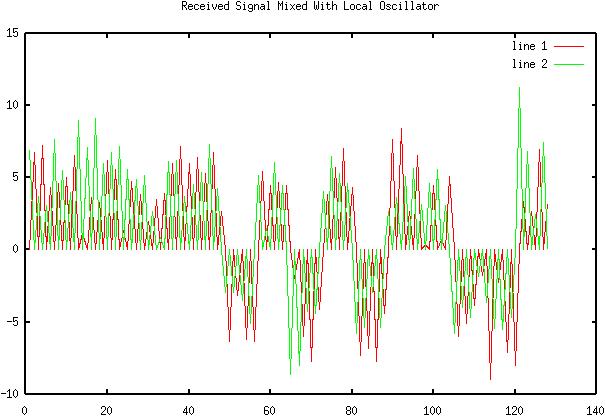
72) Diagram
71: Integrated and dumped signal
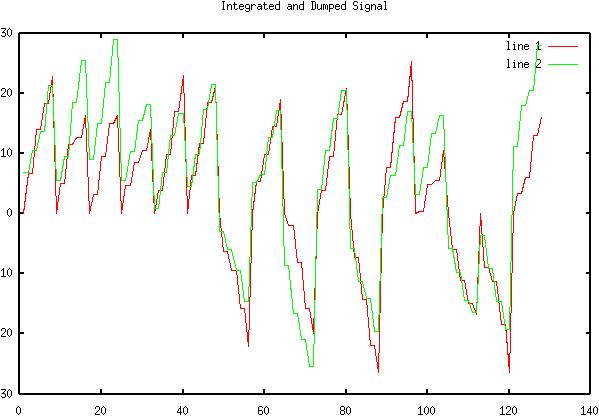
73) Diagram
72: Final received signal

74) Diagram
73: Original TTL signal for M=8 sd = 4 QPSK transmission
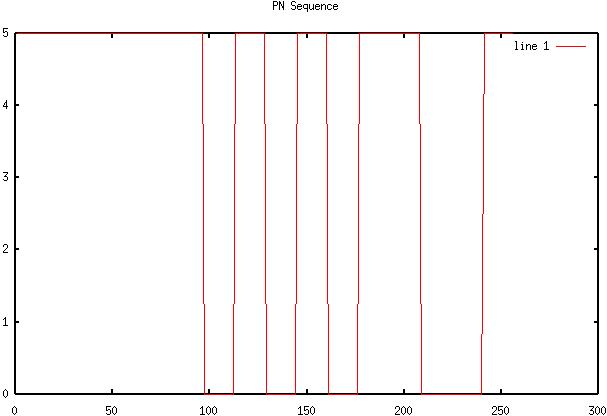
75) Diagram
74: QPSK Signal
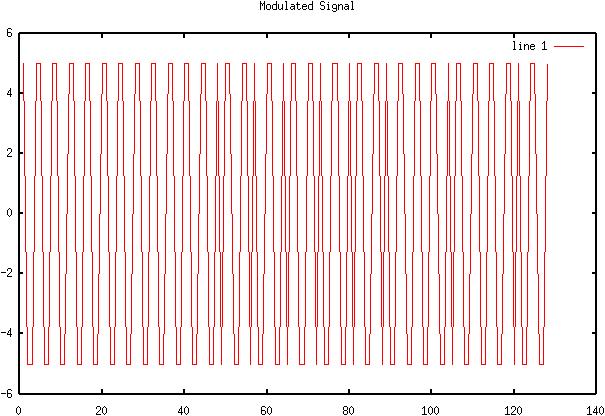
76) Diagram
75: QPSK Signal and noise
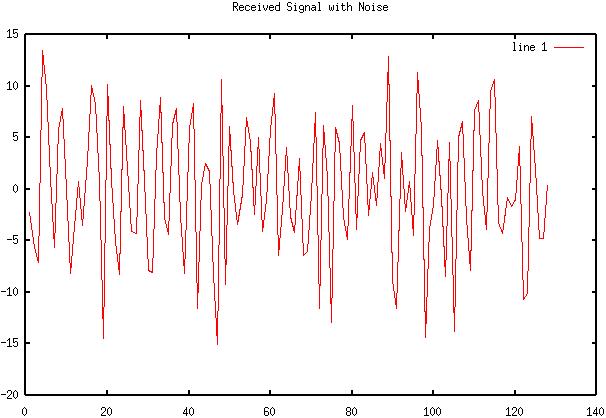
77) Diagram
76: QPSK Signal after mixing
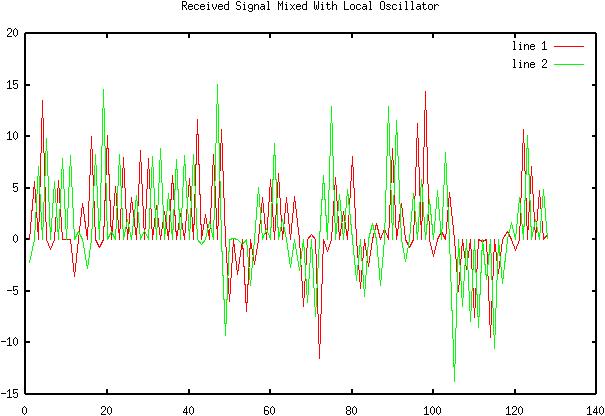
78) Diagram
77: Integrated and dumped signal
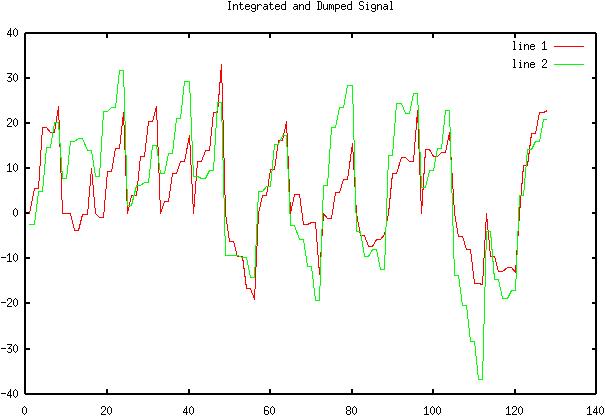
79) Diagram
78: Final received signal
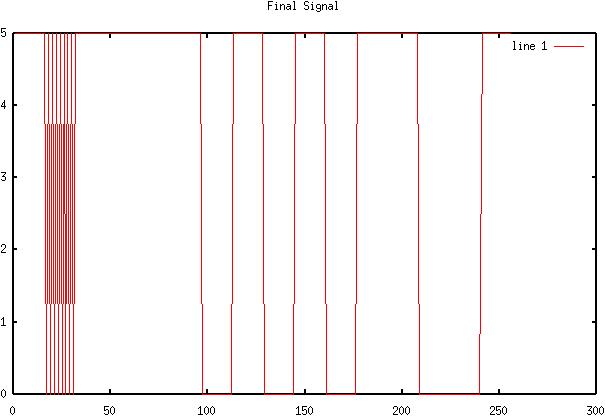
![]() Conclusions
Conclusions
This lab has demonstrated how various forms of digital signaling are affected by noise in the system. The results are fairly accurate, even though some of the percent errors are high. For QPSK modulation it was decided that the scaling factor (M value) should be set to 8. For some reason, when sampling a sine wave, as opposed to a cosine wave, the signal was indistinguishable. As a result, half of the bits were dropped before demodulation. To make sure the probability of a bit error was correct, several other tests were made using "Tesla coil" noise levels (sd > 1000). The result was usually .5 or something close to that value, which is expected.
![]() Attachments
Attachments
